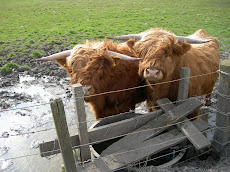Its Formation Would Lead to the Emergence of the Border Reivers
The English Scottish Borderline took centuries of war and hostility before its lines were established. People of the Border lands would suffer great hardship as a result.
Today the Border LIne runs from south-west to north-east, from the Solway Firth at Gretna (near Gretna Green) to the North Sea at Berwick-upon-Tweed. It follows a line which starts humbly and insignificantly in the little river of Sark in its run to the Solway, encompasses the rivers of Esk and Liddel in the west and moves on via the great natural barrier of the Cheviot Hills to the river Tweed and its flow to the North Sea. In all it covers over 120 miles.
Before the Making of the Border Line
In the east of the country the kingdom of Northumbria held sway into what is now modern day Scotland as far north as the river Forth and present day Edinburgh, the name of the city reflecting even now Northumbrian dominance. It is named after Edwin, famous king of Northumbria. In the west present day Cumbria, England, was still part of Scotland and the kingdom of Strathclyde.
Conflict over EnglishScottish Border
The Line of the Border would come about through the confrontation that existed between the kings of both countries. Each strove to establish power and right over his neighbour. The old order of Strathclyde and Northumbria were to change for all time in the 11th century when Cumbria would become English whilst the lands of south-east Scotland would finally be ceded to the Scots.
War and Natural Barriers Create the Border Line
In 1018, Malcolm II, king of Scots, invaded the Lothians, a fertile stretch of land that runs from the river Forth south to the Tweed, defeated a Northumbrian army at the Battle of Carham, and thus claimed the territory of the southern Lothians for Scotland. The river Tweed would become the border between Scotland and England in the east.
In 1092 William Rufus, king of England and son of the Conqueror, invaded Cumbria and drove the Scots north. The rivers of Esk and Liddel became the Border Line in the west.
The Border is Centuries in the Making
The Border Line would change and evolve over the next two hundred years but would eventually revert to the lines established in the 11th century. Often it would change, not as result of land gained through dominance of one country over the other but as a result of diplomacy or negotiation. Lands in England were sold back to the Scots on one occasion to finance a Crusade!
The Border Reivers
Kings might have established the Line of the Border and the result might have suited their vanity and quest for domination but there were many who would suffer as a result. The people living to the north of the Line in Scotland, or to the south, in England would be subject to the devastating attacks and raids as each country strove to achieve supremacy. They were the losers in the hostilities that drove the monarchs to seek ascendancy. They lost life and livelihood in the conflict. They would rise from the ashes of their loss of loved ones and living. They would challenge all authority, even monarchy, and would become feared throughout the Scottish English Border Lands for centuries.
They would become the Border Reivers.
The names of Kinmont Willie Armstrong, Walter Scott of Branxholme and Buccleuch, Richie Graham of Brackenhill and Walter Scott of Harden, amongst others, have echoed down the centuries. They will never be forgotten.
http://www.reivershistory.co.uk
Article Source: http://EzineArticles.com/?expert=Tom_W_Moss
Subscribe to:
Post Comments (Atom)











No comments:
Post a Comment